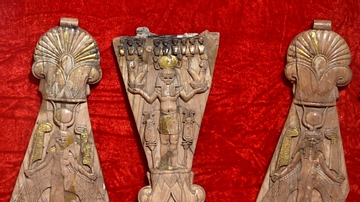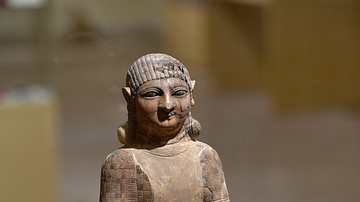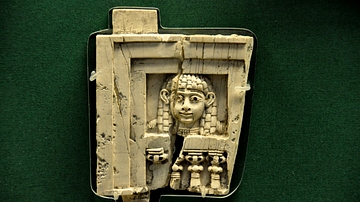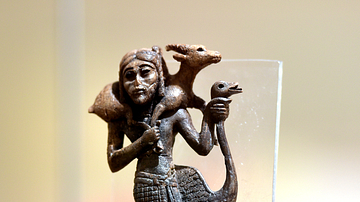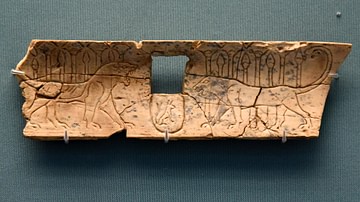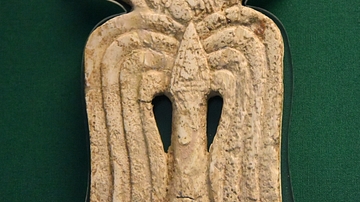Illustration
This ivory piece is part of the so-called "equestrian bridle-harness ornaments". It represents the lower part of a hinged frontlet, virtually complete. Most of the hinges and much of the iron pin have survived. A figure of the Egyptian god Bes was carved and represented frontally. Traces of the overlying gold can be seen. The palmette has a reddish rosy color.
Excavated by the State Board of Antiquities in Iraq, 1974-1975 CE season. From Well AJ at the North-West Palace, Nimrud, Iraq. Neo-Assyrian period, 9th to 7th century BCE. On display at the Iraq Museum in Baghdad, Republic of Iraq.
About the Author
References
World History Encyclopedia is an Amazon Associate and earns a commission on qualifying book purchases.Cite This Work
APA Style
Amin, O. S. M. (2019, June 08). Ivory Horse Frontlet from Nimrud. World History Encyclopedia. Retrieved from https://www.worldhistory.org/image/10895/ivory-horse-frontlet-from-nimrud/
Chicago Style
Amin, Osama Shukir Muhammed. "Ivory Horse Frontlet from Nimrud." World History Encyclopedia. Last modified June 08, 2019. https://www.worldhistory.org/image/10895/ivory-horse-frontlet-from-nimrud/.
MLA Style
Amin, Osama Shukir Muhammed. "Ivory Horse Frontlet from Nimrud." World History Encyclopedia. World History Encyclopedia, 08 Jun 2019, https://www.worldhistory.org/image/10895/ivory-horse-frontlet-from-nimrud/. Web. 24 Apr 2025.



